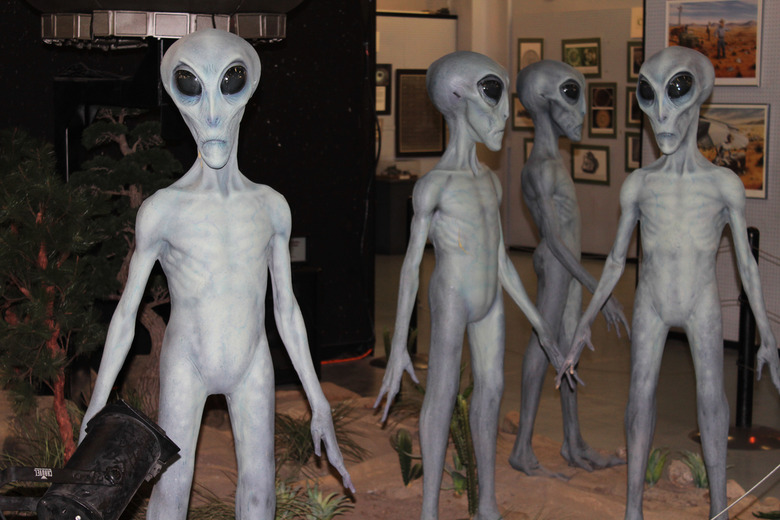The Navy Doesn't Want Its Secret UFO Videos To Ever See The Light Of Day
According to a spokesperson from the US Navy's Office of Naval Intelligence, to borrow a line from an old TV show, the truth is out there — but it will cause "exceptionally grave damage" to our national security if you ever got to see it.
Back in November 2004, multiple US Navy pilots stationed aboard the USS Nimitz aircraft carrier observed a craft that Navy officials took to referring to as an "unidentified aerial phenomenon" (you'll never catch them actually call it a UFO) flying in a weird fashion over the Pacific Ocean — in fact, bobbing and weaving in a way that seemed to defy physics. The Navy has already acknowledged the existence of videos of the bizarre flying craft, but — and here's the fun part — they're keeping a lot of the details close to the vest. Why? Oh, just for the little reason that Navy officials think it would seriously harm national security, as we noted above, if we common folk ever learned the extent of what they know about this.
This is according to the ONI spokesman, responding to a Freedom of Information Act request seeking more details stemming from those years-ago UFO encounters, about which the Navy reportedly is holding on to several videos and top-secret documents.
In response to the FOIA request from Vice, the Navy insisted that it does indeed have relevant material that's currently "classified TOP SECRET. A review of these materials indicates that are currently and appropriate Marked and Classified TOP SECRET under Executive Order 13526 and the Original Classification Authority has determined that release of these materials would cause exceptionally grave damage to the National Security of the United States."
Per Vice, a Pentagon spokesperson has said the Navy also has video of the mysterious episode in its possession but that it doesn't plan on ever making it public.
It's hard to imagine what could be on the videos and in the military agency's top-secret documents that at this point could spark such a panic. Then again, with misinformation thriving so effortlessly on the web these days, perhaps the Navy is worried as much about the snowball effect along those lines than being focused exclusively on what may or may not have been captured on video.
